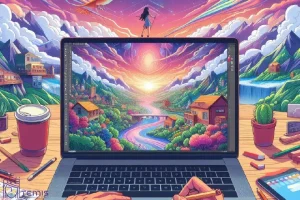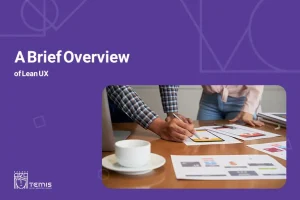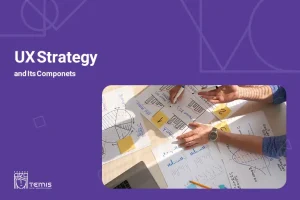The footprint of technology can be seen in every home and work today. Using laptops and computers to create presentations to share data and information or present a product with others is an ordinary task nowadays. It’s an effective communication method for delivering your idea, message, and targeted information to audiences.
Multimedia presentation is one of the most used and powerful tools for Presentation design services. You can combine images and videos with audio and animations to present a new multi-sensory experience for your audiences. In this blog post, we are going to introduce what is multimedia presentations, their definitions, how to make one, and some multimedia presentation examples to understand it better.
Table of Contents
Multimedia presentation meaning
A multimedia presentation can be explained as a presentation including information and data that is presented by video, images, and animation, or a digital presentation that includes audio, narration, music, and sound effects to deliver your messages to the audience.
You can create introductory multimedia presentation examples with Microsoft PowerPoint and Google Slides. Also, more creative and modern tools are available to help you make even better presentations.
Why do you need to do a Multimedia Presentation?
- Multimedia presentation expands the technology skills ·
- It brings the opportunity to present updated technologies
- To make an interesting/appealing presentation it creates creative challenges
- Multimedia presentations have a unique competition
What are various types of multimedia presentations?
People are familiar with multimedia and whatever means like it. There are many types of multimedia presentations. Here are some of the best multimedia presentations that can combine with text in your slides: Photos, Video, Music and other audio effects, Infographics, Animation, GIFs, Surveys, Screenshots, Logos, icons, and other graphics.
How do you choose the correct multimedia presentation?
When developing a digital-text presentation, one must pick up suitable multimedia components that are relevant to your presentation topic. Multimedia used appropriately enables the message to be expressed meaningfully, creating understanding and keeping the audience interested. Consider the following factors when selecting multimedia for your presentation:
- Content relevance: does the content you are using fit your message?
- Audio enhancement: does the quality of audio complement your content?
- Data visualization: can you simplify complex data with the visualization?
- Multimedia integration: Can all elements work together and be related?
- Accessibility considerations: is it accessible to everyone to use and understand it?
- Technical feasibility: Will you manage to present your prepared speech effectively?
What makes a multimedia presentation effective?
An effective multimedia presentation is not just adding a video or animation to your presentation; it’s about building a story. Your presentation must shine in front of your audience and grab their attention before delivering your message. We believe that the best way to make this happen is if you prepare an excellent ‘hook’ for your presentation.
Just like a good book captivates your audience so they cannot put it down or even want more of it. Those ones have long been gone where there was a need to rely on just text and simple graphics alone to develop presentations. Nowadays, it is possible for anyone to use an amalgamation of audio, video, and pictures when addressing any audience to be effective.
Common multimedia presentation examples
-
Video
You can use videos to enhance information. The video can also be used in different types of multimedia presentations to add context or bring a theory to life using visual examples.
-
Voice narration
You can use recorded voices and voice narration in your multi media presentation to influence your audience with different methods than regular ones.
-
Animations and GIFs
Sales teams no longer depend on their team to present an oral presentation. Instead, they can use remote pitching.
-
Graphs and charts
A multimedia presentation is an excellent way to solve complex problems that require close examination of large amounts of data. Charts and graphs often enhance these multimedia presentations.
How to Create a Multimedia Presentation?
You need to use the right presentation tools in multimedia based on your needs. These are simple and easy steps in the tutorial here:
1-Define what is the aim or goal of your multimedia presentation
Firstly, you should find out clearly what it is that will be presented and also why. Ensure that everything is in place concerning the necessary material to be arranged in a manner that facilitates composition.
2-Use visuals to plan your content
With everything planned for and all your content prepared for the slide deck, it’s time to develop an outline. When developing your outline, consider how this may involve different media and be improved.
3-Pick a slide layout/template and develop your contents
Go to your presentation tools in multimedia, choose a theme, select a background color or image for slides, and then go ahead and open whichever presentation tool you’re planning to make use of to locate an ideally suited presentation template meant for your task. There is a variety ranging from ready-made presentations to slide libraries available in various designs.
For a multimedia presentation, select one from slide libraries. Presentation themes are also known as slide libraries. For example, you can use Visme or Canva presentation themes.
4-Add multimedia content
By now, your presentation should appear to be smart but static. We want to make this interesting, so let’s throw in some fun multimedia presentation devices.
You can use outline and visualization idea sketches by write a short note on adding multimedia contents & printing slides. Keep in mind and do not overload the slides with too many types of media. It won’t work. In order to maintain a balance, one should aim at two or three types of media scattered throughout the presentation.
5-Review, re-edit, and share it
When it’s done, now you should make a review of your presentation. This stage is where you should check everything after you have added all your content, including regular and multimedia. Click on “present” in your used tool to read through your presentation as an observer would see it. Write down anything that appears wrong or incomplete every time you finish looking at a specific slide. Revise the same slides accordingly until you feel your presentation is perfect.
Tips to create an effective multimedia presentation
-
Choose the right media
In making a multimedia presentation, you need to specify one appropriate form of media to convey every item of information that you would like communicated. One example might be that while describing a complicated idea, consider using a video or animation. In the case of simple fact communication, choose a text or image.
-
Keep it balanced
Provide not more than two media for your presentation. Your audience may find it overwhelming if you give them too much media. Thus, you should use various types of media and use them little by little in your presentation.
-
Use high-quality media
Ensure that you have good-quality media in your presentation. Therefore, one should use transparent pictures and clips and record high-quality sound.
-
Keep It Short and simple
Avoid overcrowding your slides. The images and text need to be limited. This is because if it is too much, it becomes impossible to read. On average, audiences can pay attention to a presentation season of about 20 minutes. In that case, keep in mind in the presentation less is more. The duration of your presentation should not exceed 15 minutes.
-
Practice
Practice your presentation repeatedly before presenting it. By practicing your PowerPoint presentation, you will be able to deliver your presentation at the right time and deliver your message without any hitches.
Best Presentation Tools in Multimedia
1-Visme
Normally, you would require several software packages specifically designed for making a multimedia presentation. Presenter Maker by Visme is a great choice if you want multi-purpose software.
This means that at all times, users could choose to build multimedia presentations, which may involve animation, voiceover, or video presentation.
2-Canva
Canva integrates several key elements of PowerPoint into some of these Adobe Creative Cloud programs. It is appropriate for intermediates to experts. Their plans are also cheap for many people, while a free plan is available for everyone.
3-Keynote
People can also use a program known as Keynote, which is a product of Apple, in order to craft multimedia presentations. It is simple and very user-friendly, with a presentation font size that will allow you to create an impressive show.
4-Microsoft PowerPoint
Microsoft PowerPoint is the most known and popular free tool for creating presentations. It’s easy to use PowerPoint presentations, and it would be a good choice for beginners.
5-Google Slides
Slide is a free online tool from Google. Google Slides allows users to create presentations using text, images, charts, and graphs all in one place and its have new feature like Google Slides on smart TV.
Conclusion
The evolution of multimedia presentations has created a new communication channel in which people have learned to share ideas, disseminate, and communicate data. Audiences enjoy the different feelings of multimedia presentations integrated with multiple media elements such as text, images, audio clips, videos, and animations for more profitable retention and impact on their minds. These include educational, business marketing, and entertainment presentations. Such tools are highly functional, as they help attract viewers and stick in their minds anywhere. The emergence of multimedia presentations, coupled with technological advancement, will offer increasingly dynamic means of communicating with and engaging with global audiences worldwide.
FAQ
What is a multimedia presentation vs a presentation?
A multimedia presentation is exactly what it says: a visual presentation that uses multiple media. A multimedia presentation is different from a static presentation. It uses motion, sound, and interactive elements.
Why is multimedia presentation important?
Multimedia content can be used to enhance and vary the learning process and improve knowledge retention. Video education can give students more ways to interact with the material. Students around the globe can access video content.









